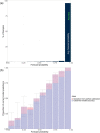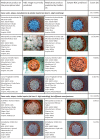Performance evaluation of a prescription medication image classification model: an observational cohort
- PMID: 34315995
- PMCID: PMC8316316
- DOI: 10.1038/s41746-021-00483-8
Performance evaluation of a prescription medication image classification model: an observational cohort
Erratum in
-
Author Correction: Performance evaluation of a prescription medication image classification model: an observational cohort.NPJ Digit Med. 2022 Feb 16;5(1):22. doi: 10.1038/s41746-022-00564-2. NPJ Digit Med. 2022. PMID: 35173263 Free PMC article. No abstract available.
Abstract
Technology assistance of pharmacist verification tasks through the use of machine intelligence has the potential to detect dangerous and costly pharmacy dispensing errors. National Drug Codes (NDC) are unique numeric identifiers of prescription drug products for the United States Food and Drug Administration. The physical form of the medication, often tablets and capsules, captures the unique features of the NDC product to help ensure patients receive the same medication product inside their prescription bottle as is found on the label from a pharmacy. We report and evaluate using an automated check to predict the shape, color, and NDC for images showing a pile of pills inside a prescription bottle. In a test set containing 65,274 images of 345 NDC classes, overall macro-average precision was 98.5%. Patterns of incorrect NDC predictions based on similar colors, shapes, and imprints of pills were identified and recommendations to improve the model are provided.
© 2021. The Author(s).
Conflict of interest statement
The authors declare no competing interests.
Figures




References
-
- Reiner, G., Pierce, S. L. & Flynn, J. Wrong drug and wrong dose dispensing errors identified in pharmacist professional liability claims. J. Am. Pharm. Assoc. 60, e50–e56 10.1016/j.japh.2020.02.027 (2020). - PubMed
Grants and funding
LinkOut - more resources
Full Text Sources
Other Literature Sources

